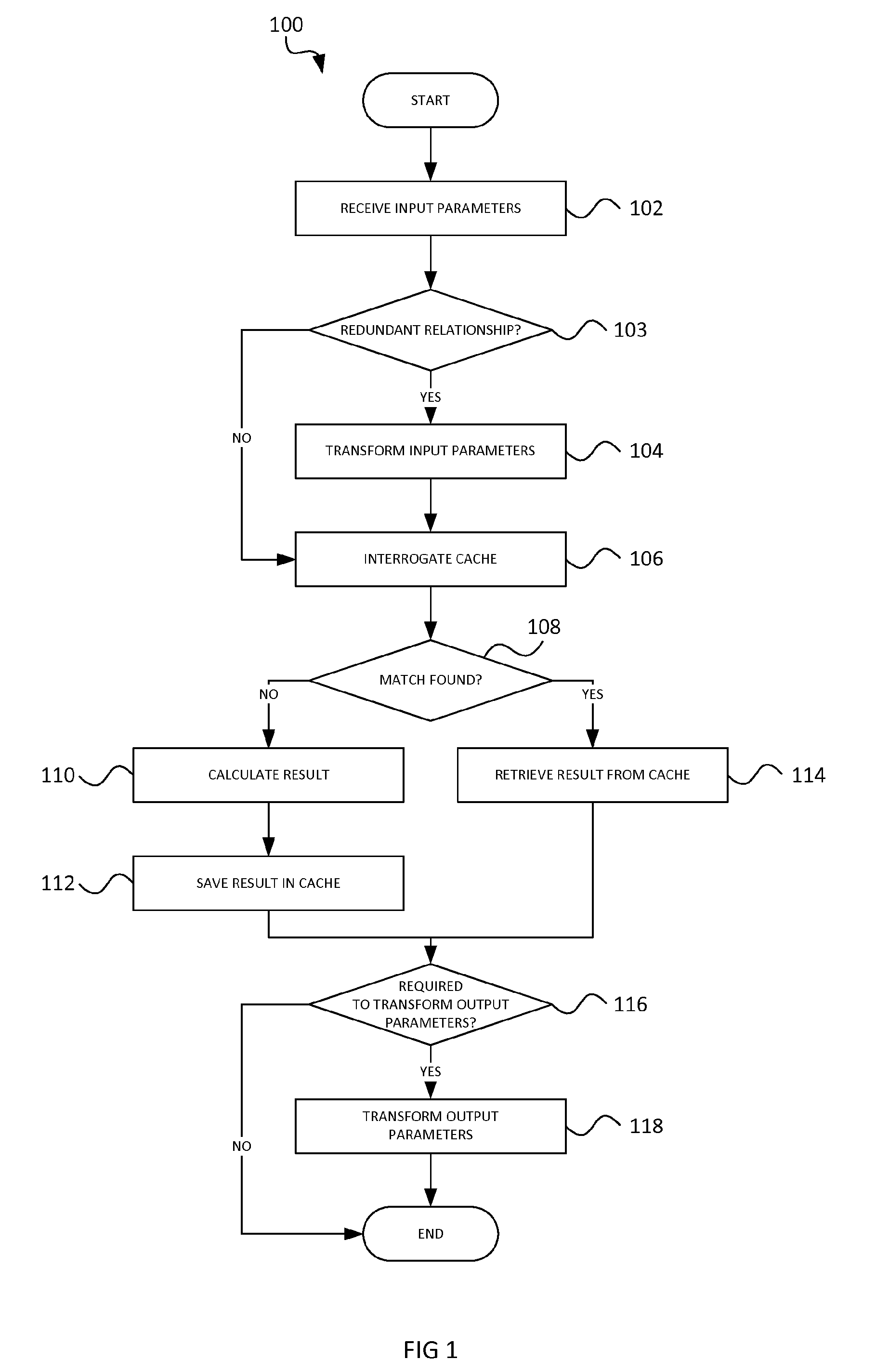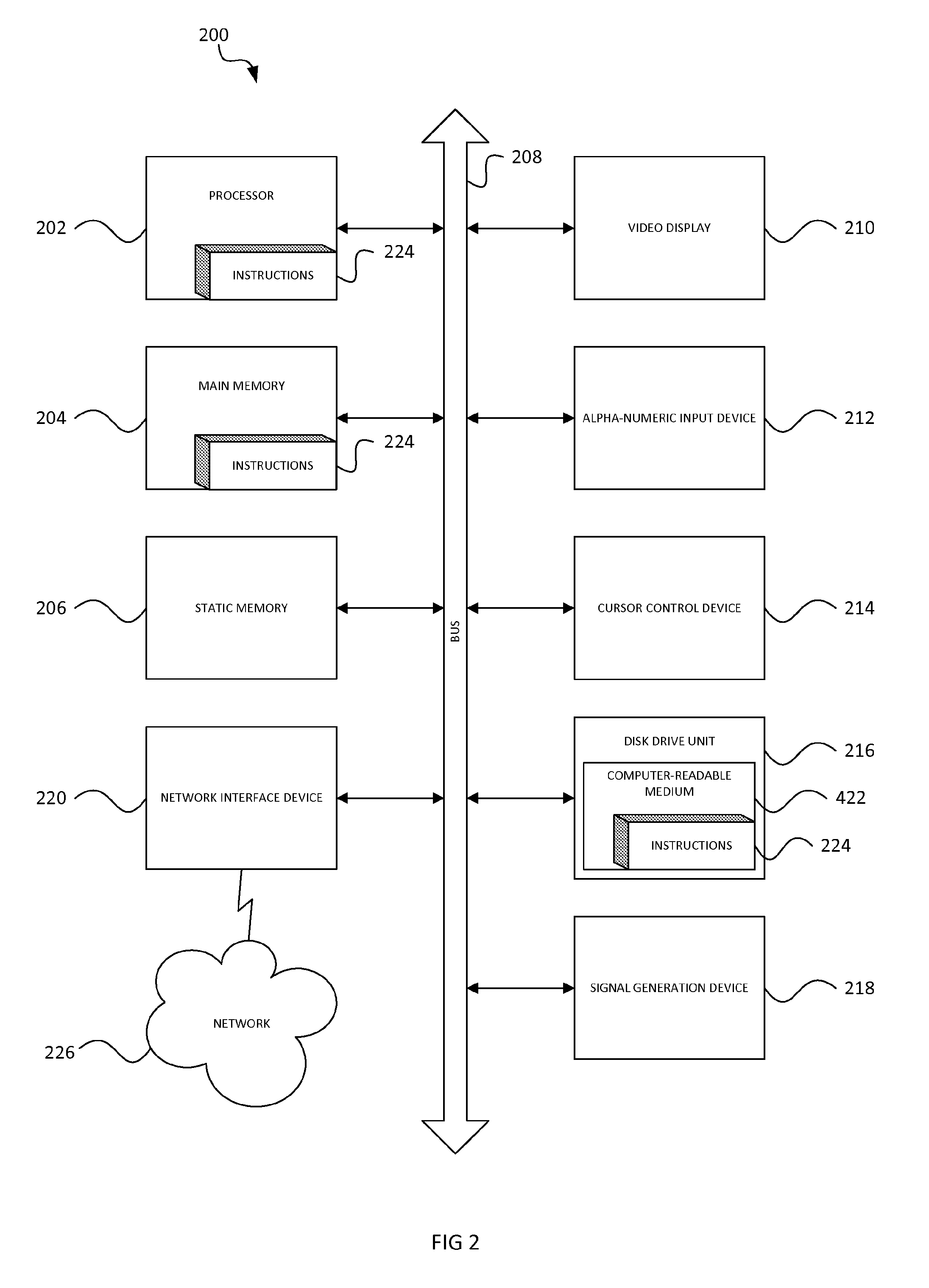Method of operating a computing device to perform memoization
a computing device and memoization technology, applied in the field of memoization, to achieve the effect of reducing the number of records stored, reducing the size of the cache, and reducing the number of steps or iterations
- Summary
- Abstract
- Description
- Claims
- Application Information
AI Technical Summary
Benefits of technology
Problems solved by technology
Method used
Image
Examples
example 1
[0038]If, for example, ƒ(a,b)=ƒ(b,a), it can be said that the input parameters of the function ƒ are interchangeable. To minimise the number of functions stored within the cache thereby to optimise the use of the cache, the variables of the functions are transformed in accordance with the transformation criteria, which in this case indicate that they must be transformed and ordered in, for instance, increasing numerical order (increasing with the position of the argument). Thus, if it is desired to calculate the result of ƒ(2,1), the variables or inputs are transformed to ƒ(1,2). As this is the first iteration, ƒ(1,2) has not previously been calculated and therefore it is calculated, at block 110 and saved, at block 112 in the cache; the result is the same as it is for ƒ(2,1). In future, if either ƒ(1,2) or ƒ(2,1) need to be calculated, the result can simply be retrieved, at block 114, based on the result of ƒ(1,2). In this example, no output parameter transformation is required.
example 2
[0039]It may be that when bounds of an integral are interchanged, the result has the same absolute value but a different sign, i.e.
∫baf(x)x=-∫abf(x)x.
In this example, the output criteria dictate that the lower numerical number of a and b must be transformed, if not already there, to the lower bound of the integral and, correspondingly, that the higher number must be transformed, also of not already there, to the upper bound of the integral. Thus, in the first iteration of the method 100,
∫34f(x),
for example, is to be calculated. For the specific iteration, no transformation need be done and the result is calculated and saved, at blocks 110, 112. In the next iteration, however,
∫43f(x)
is to be calculated. The input parameters, e.g. the bounds of the integral, are now interchanged in accordance with the defined convention and the result of
∫34f(x)
can then be retrieved from the cache 114 where it was stored in the first iteration. However, in this example, it is necessary also to transfor...
example 3
[0040]If the function includes a system of equations or a matrix (e.g. A·x=B), transforming the input parameters may include defining a specific order in which the equations or elements of the matrix are calculated, thereby to optimise memoization. The matrix illustrated in FIG. 3 is symmetrical with respect to the main diagonal and so is a Toeplitz matrix. Conventional computerised processing of matrix elements typically includes processing elements in a predefined, fixed order, typically row-wise (from the beginning of one row to the end and then repeating the process from the following rows) or column-wise. However, in accordance with the invention, the elements of the matrix are processed in an order which groups similar or equivalent input parameters or expected output parameters together. This matrix is processed in the order indicated by arrowed lines in FIGS. 3a-3d, so that more efficient use may be made of the memoization in that elements of the matrix with the same result ...
PUM
 Login to View More
Login to View More Abstract
Description
Claims
Application Information
 Login to View More
Login to View More - R&D
- Intellectual Property
- Life Sciences
- Materials
- Tech Scout
- Unparalleled Data Quality
- Higher Quality Content
- 60% Fewer Hallucinations
Browse by: Latest US Patents, China's latest patents, Technical Efficacy Thesaurus, Application Domain, Technology Topic, Popular Technical Reports.
© 2025 PatSnap. All rights reserved.Legal|Privacy policy|Modern Slavery Act Transparency Statement|Sitemap|About US| Contact US: help@patsnap.com



